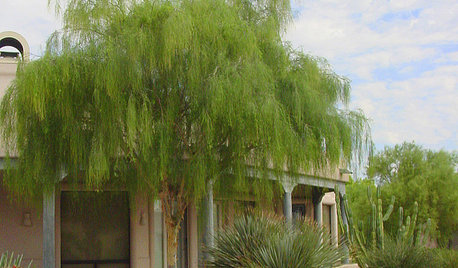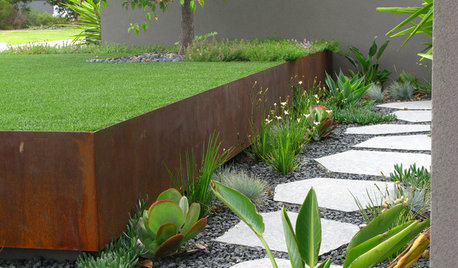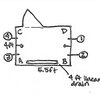water softener drain question...
dbrasili
11 years ago
Related Stories

GARDENING GUIDESGreat Design Plant: Palo Blanco Softens Sharp Desert Angles
Willowy foliage and creamy white bark give this tree a delicate beauty, but its constitution is tough
Full Story
REMODELING GUIDESConsidering a Fixer-Upper? 15 Questions to Ask First
Learn about the hidden costs and treasures of older homes to avoid budget surprises and accidentally tossing valuable features
Full Story
GREEN BUILDINGConsidering Concrete Floors? 3 Green-Minded Questions to Ask
Learn what’s in your concrete and about sustainability to make a healthy choice for your home and the earth
Full Story
MOVINGHiring a Home Inspector? Ask These 10 Questions
How to make sure the pro who performs your home inspection is properly qualified and insured, so you can protect your big investment
Full Story
DOORS5 Questions to Ask Before Installing a Barn Door
Find out whether that barn door you love is the right solution for your space
Full Story
ORGANIZINGPre-Storage Checklist: 10 Questions to Ask Yourself Before You Store
Wait, stop. Do you really need to keep that item you’re about to put into storage?
Full Story
LANDSCAPE DESIGN7 Questions to Ask Before Laying Stepping Stones
These broken-up pathways invite you to put a spring in your step — while adding functionality to the garden
Full Story
BATHROOM DESIGNHow to Choose the Best Drain for Your Shower
Don't settle for a cheap fix when you can pick a shower drain that suits your style preferences and renovation codes alike
Full Story
SAVING WATER11 Ways to Save Water at Home
Whether you live in a drought-stricken area or just want to help preserve a precious resource, here are things you can do to use less water
Full Story
HEALTHY HOMEHow to Choose a Home Water Filtering System
Learn which water purification method is best for your house, from pitchers to whole-house setups
Full Story






User
dbrasiliOriginal Author
Related Professionals
North New Hyde Park Handyman · Athens Kitchen & Bathroom Remodelers · Biloxi Kitchen & Bathroom Remodelers · Chester Kitchen & Bathroom Remodelers · Emeryville Kitchen & Bathroom Remodelers · Glen Allen Kitchen & Bathroom Remodelers · Islip Kitchen & Bathroom Remodelers · Las Vegas Kitchen & Bathroom Remodelers · Ogden Kitchen & Bathroom Remodelers · Oxon Hill Kitchen & Bathroom Remodelers · San Juan Capistrano Kitchen & Bathroom Remodelers · Joppatowne Kitchen & Bathroom Remodelers · Gibsonton Kitchen & Bathroom Remodelers · Fairmont Kitchen & Bathroom Remodelers · Kiryas Joel AppliancesUser
dbrasiliOriginal Author
User
dwpc
User
dwpc
User
kyserone